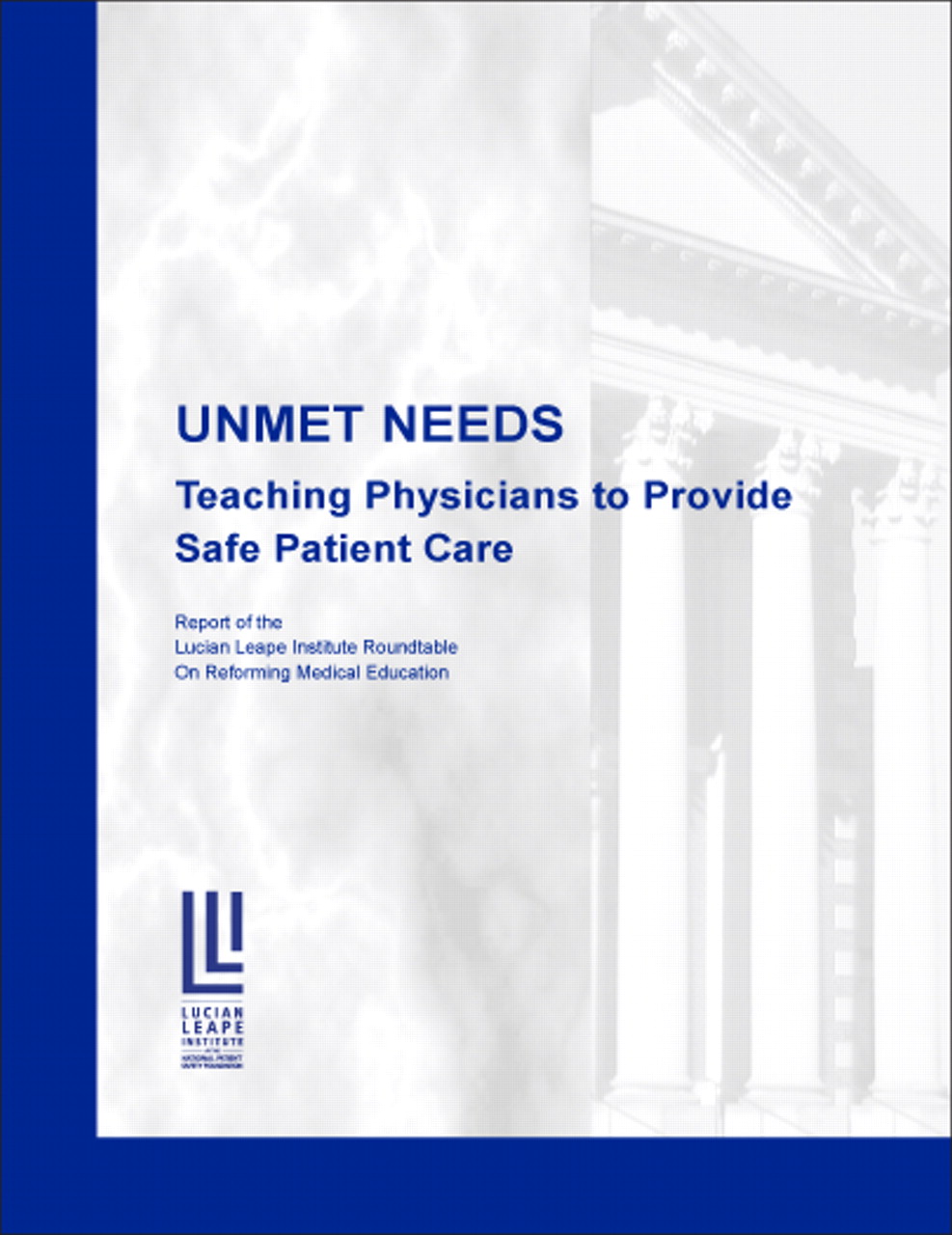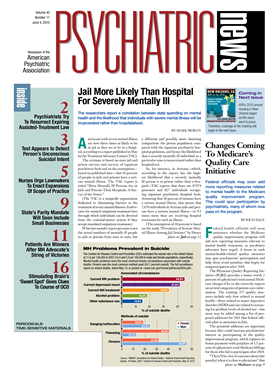Medical schools are failing to train future doctors in the skills required for the provision of safe patient care in complex health care systems.
That was the conclusion of a report, “Unmet Needs: Teaching Physicians to Provide Safe Patient Care,” prepared by the 40-member Roundtable on Reforming Medical Education convened by the Lucian Leape Institute of the National Patient Safety Foundation.
“Medical schools today focus principally on providing students with the knowledge and skills they need for the technical practice of medicine, but often pay inadequate attention to the shaping of student skills, attitudes, and behaviors that will permit them to function safely and as architects of patient safety improvement in the future,” according to the report. “Specifically, medical schools are not doing an adequate job of facilitating student understanding of basic knowledge and the development of skills required for the provision of safe patient care....”
According to the report, these skills include systems thinking, problem analysis, application of human-factors science, communication skills, patient-centered care, teaming concepts and skills, and “dealing with feelings of doubt, fear, and uncertainty with respect to medical errors.”
The report pointed out that medical students often suffer demeaning experiences at the hands of faculty and residents as a result of errors or potential errors, “a phenomenon that appears to reflect serious shortcomings in the medical school and teaching hospital cultures.”
In a statement released with the report, Dennis O'Leary, M.D., president emeritus of the Joint Commission and a member of the institute, said, “The medical education system is producing square pegs for the delivery system's round holes. Educational strategies need to be redesigned to emphasize development of the skills, attitudes, and behaviors that are foundational to the provision of safe care.”
The report lists 12 recommendations for reform, focusing on three themes:
•.
Medical schools and teaching-hospitals need to create learning cultures that emphasize patient safety, model professionalism, encourage transparency, and enhance collaborative behavior. They should have zero-tolerance policies for egregious, disrespectful, or abusive behavior.
•.
Medical schools should teach patient safety as a basic science and ensure that students develop interpersonal and communication through experiences working in teams with nursing, pharmacy, and other professionals and students.
•.
Medical schools and teaching hospitals need to launch intensive faculty development programs to enable all faculty to acquire sufficient patient safety knowledge and to develop the interpersonal skills in teamwork and collaboration that permit them to function effectively as teachers and role models for students.
Psychiatrist Geetha Jayaram, M.D., who reviewed the report for Psychiatric News, said it contributes to a growing body of literature on patient safety but appears to be the first devoted entirely to medical-school education and training regarding patient safety.
“Although there has been an increasing focus on errors in the medical field, there has not been a systematic effort to train medical students and residents about the prevention of errors,” she told Psychiatric News. “This roundtable report concludes that substantive improvement in patient safety will be difficult to achieve without a proper foundation in medical education. So the authors are advocating for a complete reform at the medical-school and residency-training levels to help shape students' skills, attitudes, and behaviors in a way that will permit them to function safely.”
She was cochair of the APA Patient Safety Committee that in June 2008 produced a resource document titled “SAFE MD: Practical Applications and Approaches to Safe Psychiatric Practice.” (The committee was sunsetted last year.) She is also chair of the Psychiatric News Editorial Advisory Board.
Jayaram emphasized that all health care, including psychiatric care, takes place within the context of complex systems involving multiple clinicians and allied professionals. Errors and adverse events that occur should be traced to system failures, rather than focusing on individual clinicians, she said.
But the traditional medical-education system, emphasizing individual clinician skill and knowledge acquisition, has instead supported “a culture of blame” that seeks to identify only individuals as the source of adverse events. And she said this culture produces a “second victim” of every adverse event—the clinician or health care worker who has been blamed.
She noted that at Johns Hopkins University School of Medicine, where she is a professor of psychiatry, a committee named the Second Victim Committee has been formed to address the consequences for clinicians who are blamed for adverse events.
Jayaram said she believes psychiatrists, used to working in collaboration with multidisciplinary teams, have much to contribute. “Psychiatry could really take the lead in helping people understand their roles within complex systems in keeping the patient safe,” she said. “We also understand the 'second victim'—someone who has made a mistake and feels isolated, judged, and marginalized after an event for which they are being held responsible.”
The Lucian Leape Institute at the National Patient Safety Foundation was established in 2007. According to its Web site, the institute is charged with “defining strategic paths and calls to action for the field of patient safety, offering vision and context for the many efforts under way within health care, and providing the leverage necessary for system-level change.”

